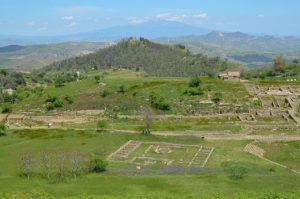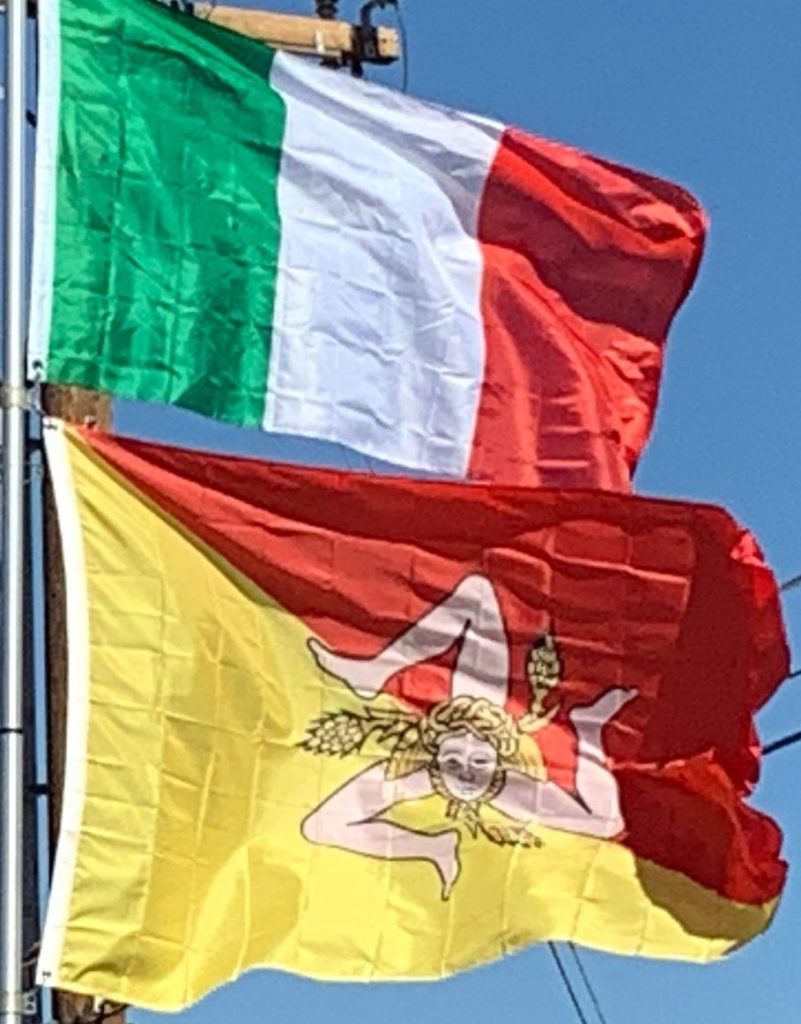No evidence survives of any warring between the tribes, but the Sicanians moved eastwards when the Elymians settled in the northwest corner of the island. The Sicels are thought to have originated in Liguria; they arrived from mainland Italy in 1200 BC and forced the Sicanians to move back across Sicily and to settle in the middle of the island. Other minor Italic groups who settled in Sicily included the Ausones (Aeolian Islands, Milazzo) and the Morgetes of Morgantina.

Antiquity:
The Phoenician settlements in the western part of the island predate the Greeks. From about 750 BC, the Greeks began to live in Sicily, establishing many important settlements. The most important colony was in Syracuse; others were located at Akragas, Selinunte, Gela, Himera and Zancle. The native Sicani and Sicel peoples were absorbed into the Hellenic culture with relative ease, and the area became part of Magna Graecia along with the rest of southern Italy, which the Greeks had also colonized. Sicily was very fertile, and the successful introduction of olives and grape vines created a great deal of profitable trading. A significant part of Greek culture on the island was that of the Greek religion, and many temples were built throughout Sicily, including several in the Valley of the Temples at Agrigento.

Politics on the island was intertwined with that of Greece; Syracuse became desired by the Athenians who set out on the Sicilian Expedition during the Peloponnesian War. Syracuse gained Sparta and Corinth as allies and, as a result, the Athenian expedition was defeated. The Athenian army and ships were destroyed, with most of the survivors being sold into slavery.
Greek Syracuse controlled eastern Sicily while Carthage controlled the West. The two cultures began to clash, leading to the Greek-Punic wars. Greece had begun to make peace with the Roman Republic in 262 BC, and the Romans sought to annex Sicily as their republic’s first province. Rome attacked Carthage’s holdings in Sicily in the First Punic War and won, making Sicily the first Roman province outside of the Italian Peninsula by 242 BC.
In the Second Punic War, the Carthaginians attempted to take back Sicily. Some of the Greek cities on the island sided with the Carthaginians. Archimedes, who lived in Syracuse, helped the Carthaginians, but was killed by the Romans after they invaded Syracuse in 213 BC. They failed, and Rome was even more unrelenting in its annihilation of the invaders this time; Roman consul M. Valerian told the Roman Senate in 210 BC that “no Carthaginian remains in Sicily”.
As the empire’s granary, Sicily was an important province, divided into two quaestorships: Syracuse to the east and Lilybaeum to the west. Some attempt was made under Augustus to introduce the Latin language to the island, but Sicily was allowed to remain largely Greek in a cultural sense. The once prosperous and contented island went into sharp decline when Verres became governor of Sicily. In 70 BC, noted figure Cicero condemned the misgovernment of Verres in his oration In Verrem.
